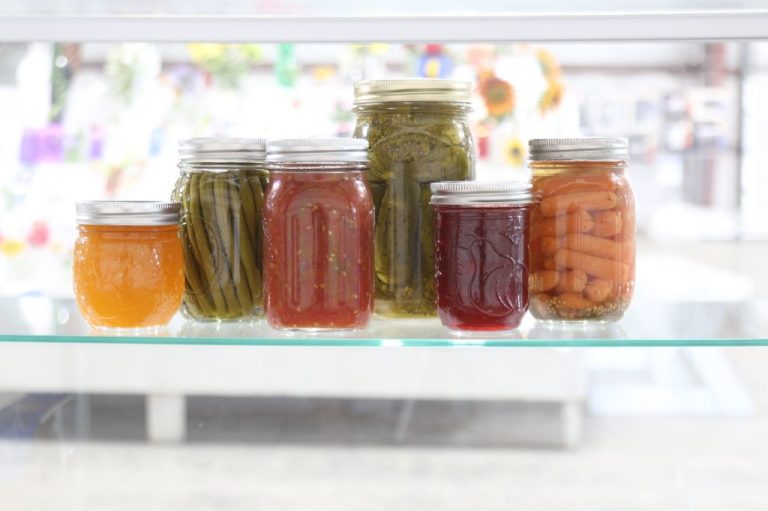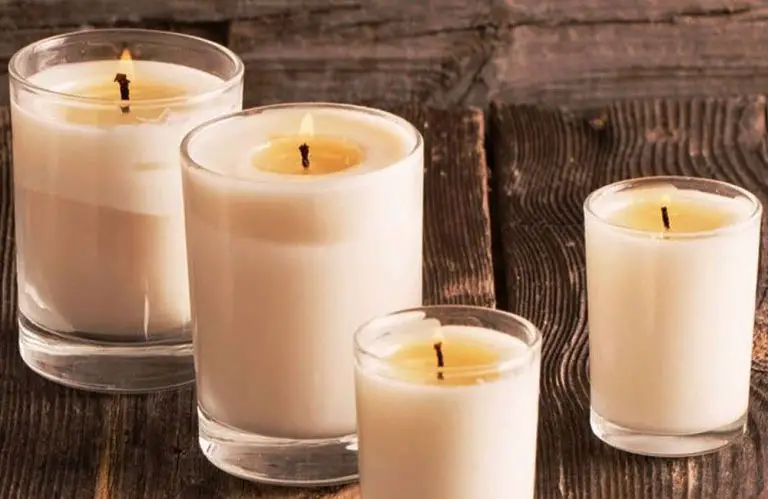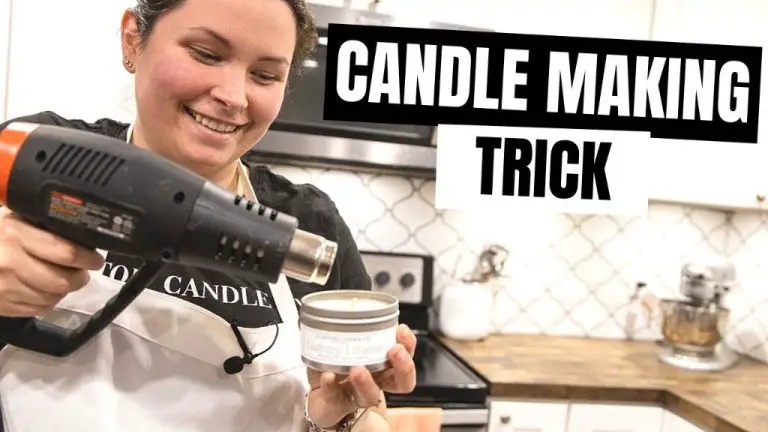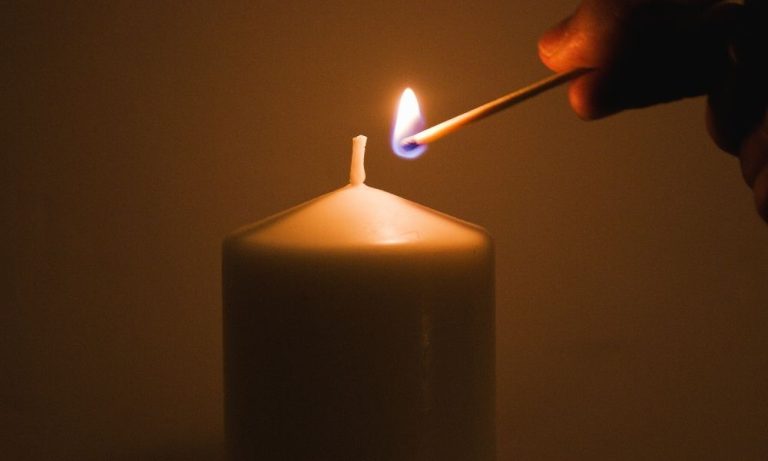How Many Candles Does 10 Lbs Of Soy Wax Make?
Candle making with soy wax has become increasingly popular over the years. Soy wax is made from soybeans and offers many benefits over paraffin wax. It’s a renewable and sustainable resource that is biodegradable and burns cleaner than paraffin. Soy wax also holds fragrance oils better and makes candles that have excellent throw. Making candles with soy wax does require some calculations and preparation to ensure you get the most out of your wax.
Benefits of Soy Wax
Soy wax is gaining popularity for candle making due to its environmentally friendly and clean burning properties compared to paraffin wax. Soy wax is made from hydrogenated soybean oil, a renewable and natural material (Source). When burned, soy wax candles release very little soot and smoke compared to paraffin candles, making them a cleaner burning option. The natural soy composition means no toxins, carcinogens or pollutants are released when soy candles are burned (Source). Many people choose soy wax candles because they are better for indoor air quality and the environment overall.
How Much Wax is Needed Per Candle
The amount of wax needed for each candle depends on the size and shape of the candle container or mold. Smaller container candles like votives or tins generally require 1-2 ounces of wax per candle1. Larger pillar candles or taper candles will require more wax per candle, sometimes 3-4 ounces or more.
For a typical container candle in a jelly jar or other small glass, plan for about 1.5-2 ounces of wax per candle. The wax needs to fully coat the inside of the container and have enough depth for a full burn. Using too little wax can lead to tunneling or other performance issues.
Be sure to weigh your candle containers before pouring to determine exactly how much wax is needed. The shape of the container matters too – narrow vs wide mouths will hold different amounts of wax. In general, allow extra wax beyond the minimum to account for fragrance, pouring variance, and testing.
Calculating Total Candle Wax Weight
When working with bulk quantities of candle wax, it’s important to calculate the total weight. For example, 10 lbs of soy wax equals 160 oz (Source). This provides a starting point to determine how much wax is needed per candle.
Most standard sized candles require 1-2 oz of wax (Source). By dividing the total wax weight by the average wax per candle, we can estimate the total number of candles that can be made.
With 160 oz of wax and an average of 1.5 oz per candle, 160 / 1.5 = approximately 107 standard candles from a 10 lb batch of soy wax.
Expected Candle Yield from 10 lbs
When making candles, it’s helpful to estimate how much wax you’ll need for the number and size of candles you want to make. With 10 lbs of soy wax, you can expect to make between 80-160 typical 8 oz container candles. This estimate is based on candle wax calculators that show around .125-.25 lbs of wax is needed per 8 oz candle1.
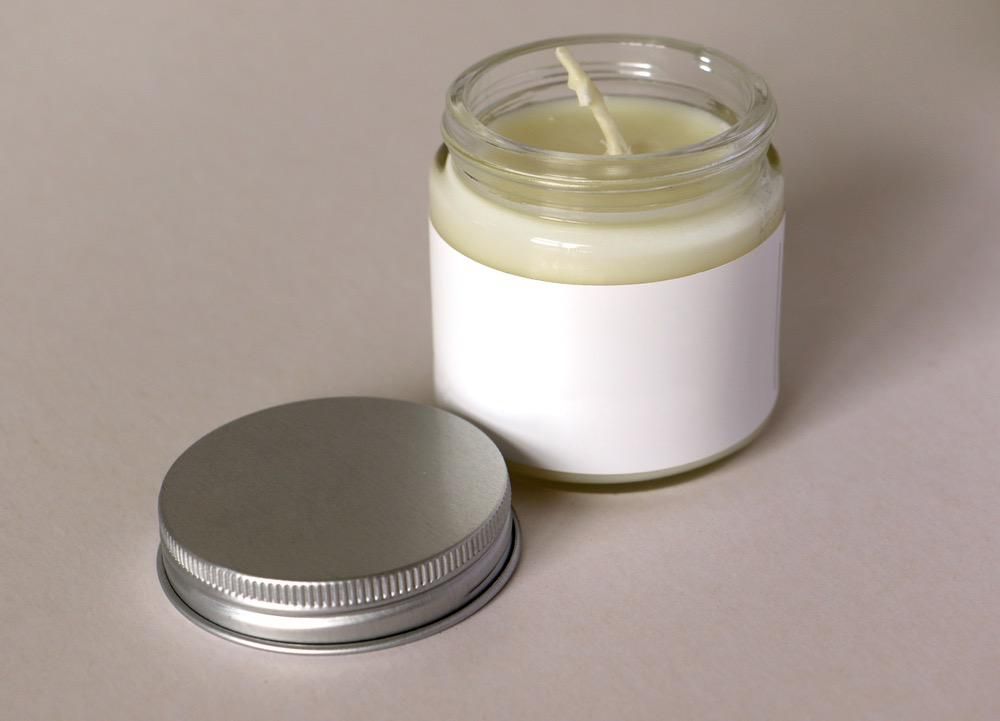
The yield depends on factors like your container dimensions and how full you fill each one. Filling containers to the brim uses more wax per candle. Leaving a bit of empty space at the top is more efficient. You may get on the lower end of the estimate (80 candles) if filling very full, or the higher end (160 candles) if leaving more headspace.
With 10 lbs of soy wax, you can also make fewer larger candles. For example, approximately 50 10 oz candles or 80 6 oz candles. When scaling up candle sizes, recalculate how much wax is needed per candle based on the larger dimensions. With some planning and testing, 10 lbs of soy wax can produce an excellent candle yield.
Optimizing Your Soy Wax Use
When making candles with soy wax, it’s important to optimize your wax usage to avoid waste and maximize yield. Here are some tips for getting the most out of your soy wax:
Measure precisely how much wax you need for each candle. Having too little wax may lead to incomplete candles, while too much wax leads to waste. A good rule of thumb is to use 1 ounce of wax per hour of burn time desired. So for a candle you want to burn 8 hours, use 8 ounces of wax. Weigh your wax on a kitchen scale for accuracy.
Melt only the amount of wax you plan to use. Don’t melt your entire brick/slab of soy wax at once if you only need a portion. Melting more than required allows wax to absorb more moisture and leads to waste.
Pour wax at the proper temperature. Soy wax should be around 135-165°F when poured into containers. Too hot and you risk sinking/frosting. Too cold and pouring becomes difficult. Use a thermometer to check wax temp.
Let wax fully set before second pour. If doing a second pour to top off candles, allow the first pour layer to fully set up before adding more wax. This prevents sinking and separation between layers.
Reuse wax scraps whenever possible. Leftover wax, melted containers, wax that has sunk/separated can often be filtered and reused. Soy wax is very forgiving when re-melted.
Make use of wax that remains at the end of pouring. Extra leftover wax can be poured into a silicone mold to make wax melts or tarts. No wax should go to waste.
Choosing Wick Sizes
One of the most important factors in candle making is matching the proper wick size to the wax type and candle diameter. Using the right wick will allow the candle to burn cleanly and prevent issues like tunneling. With soy wax specifically, larger wick sizes are often needed.
As a general guideline, use size L or XL wicks with pure soy wax candles, according to Lone Star Candle Supply’s wicking guide. The natural properties of soy wax require more heat to melt the wax pool, which larger wicks provide.
Testing different wicks is also recommended until you find the best fit for your particular soy wax blend and candle size. Monitor how evenly test candles burn and adjust wick sizes accordingly. A wick that is too small can lead to tunneling, while an oversized wick may cause soot or a dangerously large flame.
With testing and experience, you will dial in the perfect wick to produce the best soy candle results.
Adding Scent and Dyes
When making soy candles, adding fragrance oils and liquid dyes is key to creating an appealing aroma and color. But it’s important to use the right amounts for optimal results.
For fragrance oils, the standard usage rate is around 6-8% of the total candle wax weight. So if you are making a 100g candle, you would use 6-8g of fragrance oil. Using too little may lead to a weak scent throw, while using too much can diminish wax adhesion and lead to sweating on the glass container. A good rule of thumb is to follow the recommended usage rate from your fragrance oil supplier. https://suppliesforcandles.co.uk/candle-college/how-much-fragrance-to-add-to-candles
For liquid candle dyes, usage rates are around 0.5-1% of the wax weight. So for a 100g candle, use around 0.5-1g of dye. Stir thoroughly to distribute the dye evenly. Adding too much dye can lead to poor performance and fading color. Refer to the dye supplier’s instructions as well. https://www.cierracandles.com/how-to-use-liquid-candle-dye.html
Make sure to add the fragrance and dye once the wax has cooled to the right temperature, usually around 175°F-185°F / 79°C-85°C for soy wax. Adding at too high a temperature can cause the scent and color to break down or fade.
Pouring and Cooling
Proper pouring temperature is critical for achieving optimum results when making soy candles. According to How to Make A Soy Candle – CandleScience, soy wax should be poured around 135°F to ensure proper adhesion to the wick and clean pouring into the container. Pouring wax too hot can cause issues like sinkholes, poor scent throw, and frosting on the candles. It’s recommended to heat soy wax to a maximum temperature of 185°F before pouring.
Allowing soy wax candles to cool properly after pouring is also very important. The cooling process should be gradual, starting with letting the candles sit at room temperature for 1-2 hours as per Better Pouring Methods for Better Soy Candles – Coogar Products. Avoid drastic temperature drops or quick cooling, as this can cause cracks, wet spots, and other defects. Cool the candles 10-15 degrees below the pour temperature before moving to the next step like adding a second pour or inserting wicks. With proper pouring and controlled cooling, you can achieve flawless soy wax candles every time.
Conclusion
In summary, we’ve looked at some key factors in determining the candle yield from 10 pounds of soy wax. On average, you can expect each pound of soy wax to make approximately 23-24 standard candles that are 6 ounces each. This means with 10 pounds of wax, your total estimated yield would be 230-240 candles.
The actual yield can vary based on the jar size, wick thickness, adding fragrance or dyes, and your pouring methods. But in general, you can expect about 20-25 candles per pound of soy wax or 200-250 from 10 pounds. With some optimization of your process, you may be able to increase that yield further. The most important factors are choosing the right wick size, allowing adequate cooling time, and minimizing waste.
Making candles with soy wax allows you to create safe, clean-burning candles. With some planning and testing, 10 pounds of wax can give you hundreds of high quality, homemade candles to enjoy or share.


